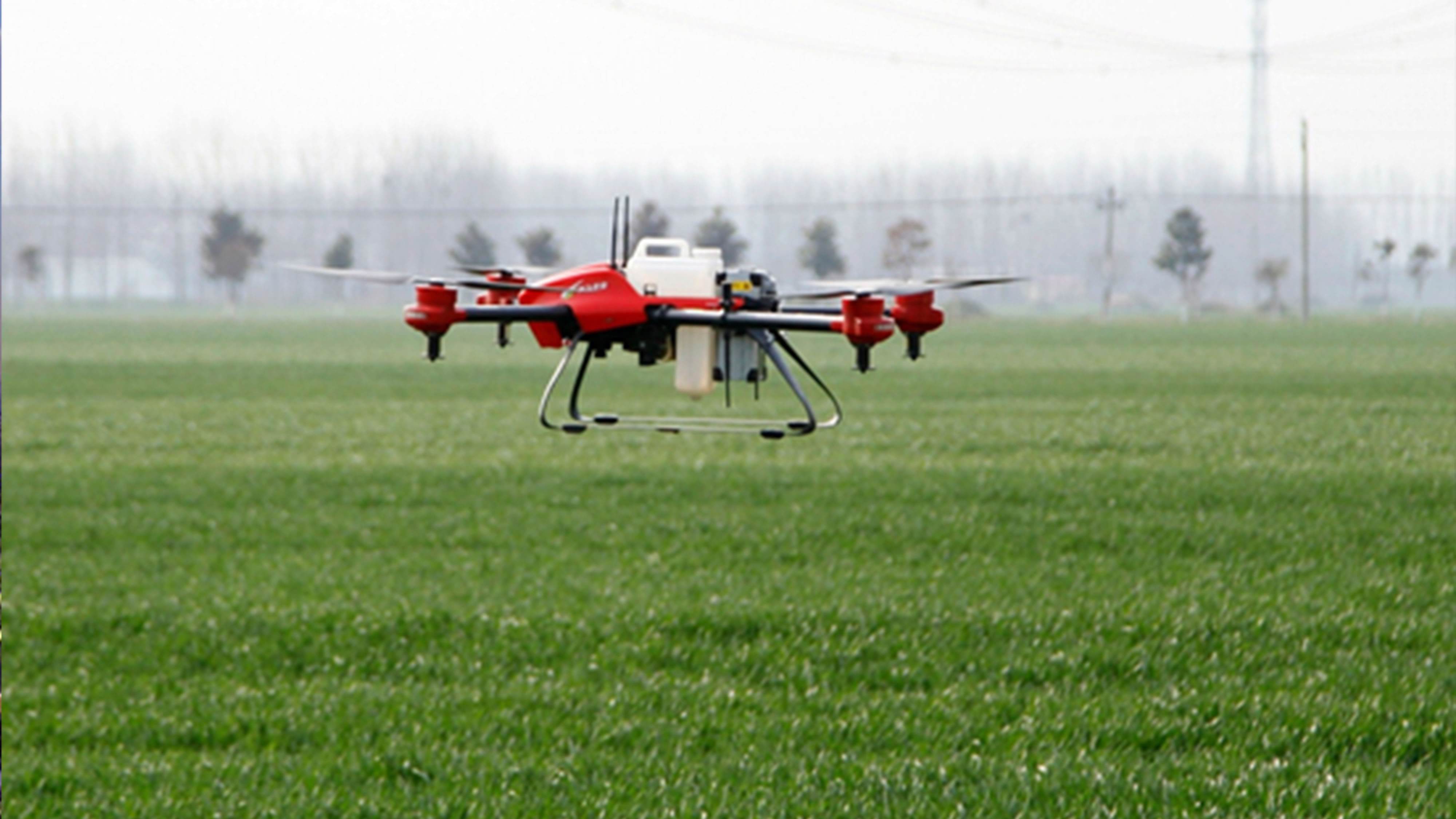
Drone
21:16, 27-Mar-2018
Drone spraying: The future of China’s agricultural modernization
By Ge Yunfei

Over 1.8 million tons of agricultural pesticides were used in China in 2016, accounting for one-third of the world’s total amount.
As the world’s top consumer of pesticide, China is, at the same time, the leading manufacturer of drones. Now a group of people in southern China is striving to use drones to reduce the country’s consumption of pesticides.
Deng Jiajian, general manager of Hainan Nongfeike Agricultural Technology Corporation, has the largest agriculture drone fleet in the country’s southern tropical island province.
He told CGTN that using drones to spray pesticides is 30 times more efficient than the traditional way. And through a great number of experiments, Deng has found that drone spraying can save 25 percent of pesticide usage. For each drone to carry out its task, it only takes two liters of water per acre in China, compared to 60 liters of water with manual spraying.

Using drones to spray pesticides is 30 times more efficient than the traditional way. /CGTN Photo
Using drones to spray pesticides is 30 times more efficient than the traditional way. /CGTN Photo
36-year-old Wang Juan is a postdoctoral fellow at the South China Agricultural University. She and her team have been studying precision agricultural aviation pesticide spraying technology since 2014.
Wang Juan said their target is to achieve precise spraying.
“First, we use spectral cameras installed on the drone to scan farmland and generate a prescription picture that can show the different levels of insect damage to the farmland. Then the drone can control the amount of pesticides sprayed on the crops according to their damage levels.”
To this end, a huge amount of detailed work needs to be carried out. Wang and the students have to fly all over the country to carry out experiments on different crops, and collect raw data piece by piece.

Wang Juan, a postdoctoral fellow at the South China Agricultural University /CGTN Photo
Wang Juan, a postdoctoral fellow at the South China Agricultural University /CGTN Photo
According to Wang, aviation spraying is a very mature concept in the US but a new thing in China. So the industry in China doesn’t have an operation standard. What’s more complicated is that the standard for each crop in each stage of growth is different. “So we’re now trying to establish a standard model for China’s drone spraying,” she added.
Currently, there are nearly 5,000 agricultural drones in China, and the number is rapidly increasing with big manufacturers like DJI joining the arena.
Wang hopes the government can introduce more preferential policies to support the development of agricultural drones.

SITEMAP
Copyright © 2018 CGTN. Beijing ICP prepared NO.16065310-3
Copyright © 2018 CGTN. Beijing ICP prepared NO.16065310-3